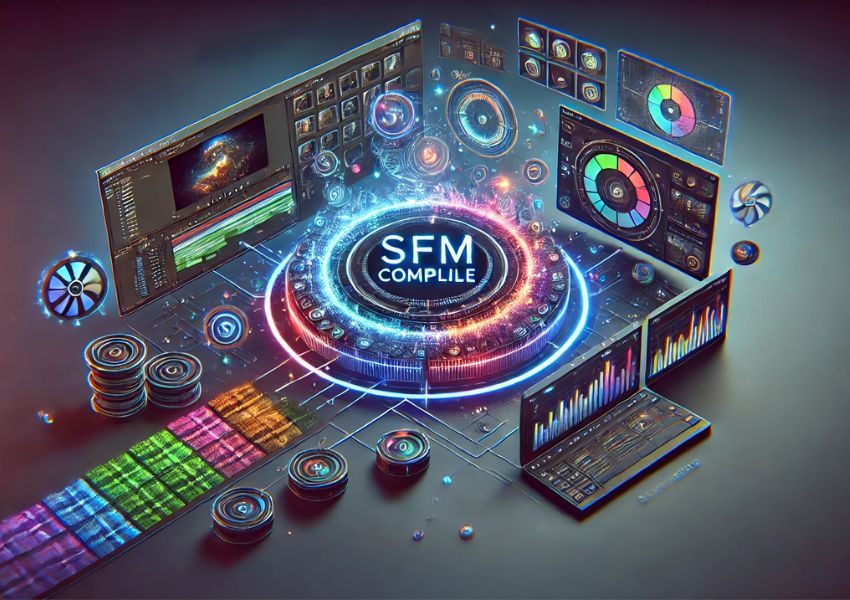For those who work with Source Filmmaker (SFM), understanding the process of “sfm compile” is essential for producing high-quality animations. SFM is a powerful tool used by animators and content creators to bring their projects to life with detailed 3D visuals and cinematic effects. However, before an animation can be shared or finalized, it must go through the “sfm compile” process, which ensures that all assets, effects, and rendering settings come together seamlessly. This article explores what “sfm compile” means, why it is important, and how users can optimize their workflow to get the best results.
What Is SFM Compile?
“Sfm compile” refers to the final stage of animation production within Source Filmmaker. It is the process of rendering and exporting a completed project into a playable video format. During this process, SFM compiles all animation data, lighting effects, sound design, and camera movements into a single file that can be viewed outside of the SFM editor. The quality of the final output depends on the settings chosen during the “sfm compile” process, making it a crucial step for animators.
Compiling is necessary to transform the raw animation project into a usable and shareable format, such as MP4, AVI, or image sequences. Without “sfm compile,” the project would remain an editable session within SFM but would not be viewable as a finished animation.
The Importance of SFM Compile in Animation
The “sfm compile” process ensures that all elements of an animation are correctly rendered and combined into a high-quality final product. Some of the key reasons why “sfm compile” is important include:
- Optimized Performance: Without proper compilation, playback in SFM can be choppy or slow due to the high computational demand of real-time rendering.
- High-Quality Output: “Sfm compile” allows users to select rendering settings that determine the resolution, frame rate, and overall quality of the animation.
- Compression and Compatibility: The compilation process ensures that the animation is converted into a format that can be played on different devices and platforms.
- Final Touches: Effects such as motion blur, depth of field, and post-processing enhancements are applied during “sfm compile” to create a polished final look.
Steps to Perform SFM Compile
The “sfm compile” process involves several important steps that ensure a successful final render. Here is a step-by-step breakdown of how to compile an SFM project effectively:
- Prepare the Timeline: Ensure that all animations, sound effects, and camera movements are finalized before starting the compilation process.
- Adjust Rendering Settings: Select the desired output resolution, frame rate, and format. Common settings include 1080p at 60FPS for high-quality animations.
- Enable Motion Blur and Depth of Field: These settings enhance the realism of the animation and make movements appear smoother.
- Select the Render Mode: SFM offers different rendering modes, including image sequences and video files. Choosing the right mode depends on the project’s needs.
- Start the Compilation Process: Click the “Export” or “Compile” button to begin rendering. Depending on the complexity of the project, this process may take several minutes to hours.
- Check the Final Output: After “sfm compile” is complete, review the final video to ensure there are no visual errors or artifacts.
By following these steps, users can achieve the best possible quality in their compiled animations.
Common Issues During SFM Compile and How to Fix Them
While “sfm compile” is a straightforward process, users often encounter issues that affect the final render. Some of the most common problems and their solutions include:
- Rendering Crashes: If SFM crashes during the compilation process, try lowering the rendering resolution or closing other applications to free up system resources.
- Low-Quality Output: Ensure that rendering settings are set to the highest quality before compiling. Selecting a higher bitrate and enabling full-frame rendering can improve output quality.
- Artifacts and Glitches: If visual glitches appear in the final video, check for missing assets, lighting errors, or corrupted project files.
- Slow Compilation Times: If “sfm compile” takes too long, consider reducing the number of real-time effects or upgrading system hardware for better performance.
Tips to Improve SFM Compile Performance
To ensure a smooth and efficient “sfm compile” process, users can follow these best practices:
- Use a Powerful Computer: Rendering in SFM requires significant processing power. A high-performance CPU and GPU can drastically reduce compile times.
- Optimize Assets: Reduce the number of unnecessary objects and effects in the scene to improve rendering speed.
- Render in Image Sequences: Instead of compiling directly into a video file, rendering as image sequences allows for better post-production editing.
- Adjust Light and Shadow Settings: Lowering shadow resolution and optimizing lighting settings can prevent slowdowns during “sfm compile.”
Conclusion
“Sfm compile” is an essential step in creating polished and professional animations in Source Filmmaker. By understanding the compilation process, troubleshooting common issues, and optimizing rendering settings, users can achieve high-quality results efficiently. Whether creating cinematic shorts, animated music videos, or game-inspired content, mastering “sfm compile” ensures that animations are visually stunning and ready for sharing.






